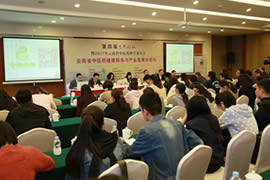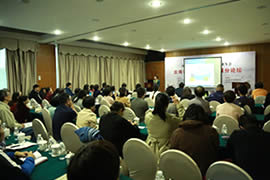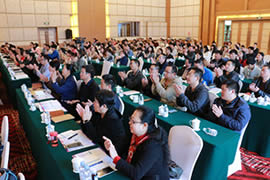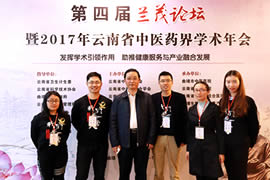参考文献:
[1] 曹晖,陈文,毕培曦.地胆草属药用植物的研究概述[J].国外医学:中医中药分册, 1998, 20(2):11~15
[2].陈艺林.中国植物志.第74卷[M].北京:科学出版社, 1985.43
[3] BUT P P H, HON P M, CAO H, et a.l Sesquiterpene lactones from Elephantopus scaber[J].Phytochemistry,1997, 44 (1): 113-116.
[4] Ai-Xue Zuo, Chun-Ping Wan, Xi Zheng, and Gaoxiong Rao. Chemical constituent of Elephantopus scaber. Chemistry of Natural Compounds,2016,52(3):484-486.
[5] Y. W. Mao, H. W. Tseng, W. L. Liang et al., Anti-inflammatory and free radial scavenging activities of the constituents isolated from machilus zuihoensis. Molecules,2011,16(11):9451-9466.
[6] 周茹,杨以阜,左建平.II型胶原诱导的小鼠关节炎动物模型的建立及影响因素[J].中国药理学通报,2006,22(12):1532-5.
[7] Chun-Ping Wan, Li-Xin Gao, Li-Fei Hou, Xiao-Qian Yang, Pei-Lan He, Yi-FuYang, Wei Tang, Jian-Min Yue, Jia Li ,Jian-Ping Zuo. Astragaloside triggers T cell activation through regulating the activity of CD45 protein tyrosine phosphatase[J]. Acta Pharmacologica Sinica,34:522-530,2013.
[8] Li-Fei Hou , Shi-Jun He, Xin Li, MSc, Yang Yang, Pei-Lan He,Yu Zhou, Feng-Hua Zhu, Yi-Fu Yang, Ying Li, Wei Tang,Jian-Ping Zuo,.Oral administration of artemisinin analog SM934 ameliorates lupus syndromes in MRL/ lpr mice by inhibiting Th1 and Th17 cell responses[J].Arthritis & Rheumatology
2011, 63(8):2445–2455
[9] Li-Fei Hou,Shi-Jun He,Xin Li,Chun-Ping Wan,Yang Yang,Xiao-Hui Zhang, Pei-Lan He,Yu Zhou1,Feng-Hua Zhu,Yi-Fu Yang,Ying Li,Wei Tan,Jian-Ping Zuo.Artemisinin analogue SM934 treated NZB × NZW F1 mice by enhancing macrophage interleukin-10 production and suppressing pathogenic T cell development [J] PLoSONE7(2) :e32424, 2012.doi:10.1371/journal.pone.0032424.
[10] Lifei Hou; Jessica Cooley; Richard Swanson; Poh Chee Ong; Robert N Pike;
Matthew Bogyo; Steven T Olson; Eileen Remold-O'Donnell.The protease cathepsin L regulates Th17 cell differentiation[J]. Journal of Autoimmunity, 2015, 65:56-63.
[11].B. McInnes, G. Schett, The pathogenesis of rheumatoid arthritis[J]. N Engl J Med,2011,365 (23) :2205–2219.
[12] C. Selmi, E. Generali, M. Massarotti, G. Bianchi, C.A. Sciré, New treatments forinflammatory rheumatic disease[J].Immunol Res, 2014,60 (2–3) :277–288.
[13]Perkins, D.L.. T-cell activation in autoimmune and inflammatory diseases[J]..
Current Opinion in Nephrology and Hypertension, 1998, 7 (3):297–303.
[14] E. Brzustewicz, E. Bryl. The role of cytokines in the pathogenesis of rheumatoid arthritis--practical and potential application of cytokines as biomarkers and targets of personalized therapy[J]. Cytokine, 2015, 76( 2): 527-536.
[15] R. Gerli, O. Bistoni, A. Russano et al.In vivo activated t cells in rheumatoid
synovitis. Analysis of th1- and th2-type cytokine production at clonal level in
different stages of disease[J].Clinical and experimental immunology, 2002,129:3:549-555, 2002.
[16] Y. Kageyama, Y. Koide, A. Yoshida et al.Reduced susceptibility to
collagen-induced arthritis in mice deficient in ifn-gamma receptor[J]. Journal of
immunology (Baltimore, Md. : 1950), 1998,161(3): 1542-1548.
[17] J. L. Grogan, R. M. Locksley.T helper cell differentiation: On again, off again[J]. Current opinion in immunology, 2002,14( 3) :366-372.



